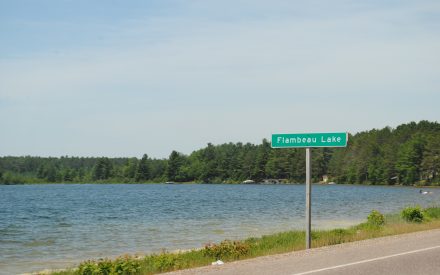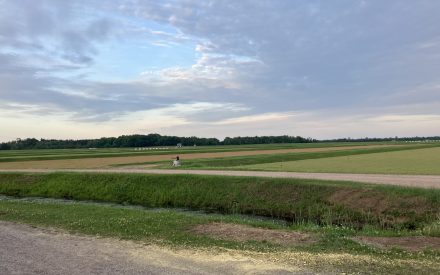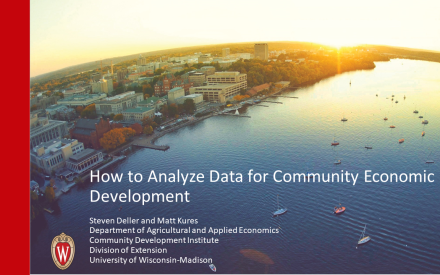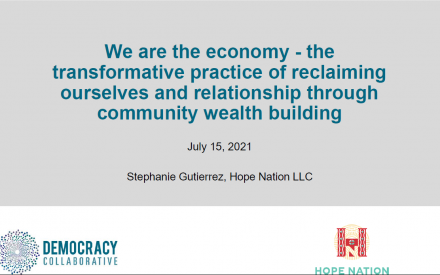October 2021 — The need for communities to work together on issues of mutual interest and concern has been widely expressed by both academics and community development practitioners for a number of years. Small town decision-making capacity to “go it alone” is inhibited by a growing number of external linkages in both the public and private sectors and a declining fund of local resources. Under these conditions, independent, community-specific economic development efforts for the provision of services, improvement of the infrastructure, or economic development for jobs and income are increasingly inappropriate for many smaller communities. Multi community cooperative efforts may have a much better chance of success.
At the simplest level, the answer to the question “Why Work Together?” is contained in a simple truth: The major reason for working together (at the individual, group, community, state, or national level) is when conditions are such that all parties gain more of whatever it is they value in the collaborative relationship than they can gain by acting independently. The conditions that must be present to achieve such a win-win outcome are complex and require considerable attention on the front end of several factors.
Perhaps the most important front-end factor is knowledge. As noted by Peter Drucker, “knowledge has become the central economic resource. The systematic acquisition of (usable) knowledge has replaced experience as the foundation for productivity capacity and performance.” The implications of this notion, that knowledge is a central economic resource, are substantial. At the very least it underscores the need for strong, intensive, and sustained leadership development programs in the context of the relevant community, which involves the notion of multi-community collaboration in a number of cases.
Specifically, by pooling resources through collaborative efforts, the knowledge pool necessarily expands, but also the resources to acquire knowledge expand. Smaller communities oftentimes lack the critical mass to enter into applied research studies aimed at better understanding their local economy and identifying economic development opportunities. By pooling resources, opportunities to undertake educational initiatives are greatly expanded. In the jargon of economists, by forming multi-community collaborations, communities can capture economies of scale and scope, capture positive externalities (i.e., spillovers) from collective actions, and build synergisms.
The notions of economies of scale and building synergism should be straightforward, but what of these notions of economies of scope and externalities? The concept of economies of scale centers on the idea that factor resource productivity increases as the scale of operation increases. The idea is that “bigger is better.” Consider the economic development activities of a community as analogous to a multi-product firm. The community is working on enhancing the market for downtown retail and service businesses, providing inexpensive rent for manufacturing firms in an industrial development park, or providing educational opportunities for local entrepreneurs. In a sense, the community is producing more than one economic development product. The costs of producing multiple products (strategies) are lower than if each product was produced independently. The sum of the pieces is greater than the whole. Through multi-community collaborative efforts, the opportunities to capture economies of scope are enhanced.
Capturing positive externalities follows from the idea that in our modern society the successes of one community’s economic development activities spill over into neighboring communities. Long gone are the days when a community resident lived, worked, shopped, and went to church in one community. If a community is successful at expanding the operations of an existing business, the people that take those jobs may very well commute in. Or, if people migrate into the area to take those jobs the odds of them buying a house in that community are small. In this case, neighboring communities experience a positive spillover (i.e., externality).
The economics are clear in the case of positive externalities: the individual, firm, or community that is generating the positive externality will not consider them in their decision-making. In their thinking, the community will only consider the impact of the action on their community and will discount or ignore the positive impacts on their neighboring communities. In other words, the community will ask the question, why should we make the investment here in our community if some of the benefits flow to neighboring communities? The economics predicts that the answer to the question is that the community will not make the investment.
By forming cooperative arrangements where neighboring communities join forces in the name of community economic development, the potential to capture these positive spillovers will be greatly enhanced. Individual communities will see the positive benefits of their actions on the surrounding region. At the same time, the community will see how they benefit from the actions of their neighbors. By working together, these benefits will be maximized.
In addition, communities can learn from each other and gain not only knowledge but also experience (which is still important despite Drucker). They may find that different communities have relative comparative advantages that they can use to complement each other. One community may have an industrial park for light manufacturing, while another has excellent office space for service-type firms, and a third has a large community forest that can be used for recreational developments. By collaborating, communities can focus their limited resources on best uses.
There are, however, some very real barriers to forming cooperative agreements in community economic development. The lack of legal status can be a hindrance to cooperative organizations. Local governments may be unwilling to “transfer power” in the name of collaboration. Local pride can become a barrier and spill over into other collaboration efforts. Community pride may be lost in attempting to form a sense of a larger community. The jealousy between and across communities can be very real. A community with a vibrant downtown may be wrongly accused of capturing all the benefits of cooperative actions. Finally, under-representation of the involved, communities can limit the success of joint efforts. If only a small handful of people exist, who are actively pursuing collaborative efforts, the synergies required may not develop.
It is important to keep in mind that there is no “magic bullet” in community economic development. Several pieces of the puzzle need to be in place before a community can successfully engage in economic development. Multi-community collaboration can be an important step in helping put those pieces of the puzzle together.
Endnote
This essay draws on Multicommunity Collaboration: An Evolving Rural Revitalization Strategy. North Central Center for Rural Development, Iowa State University. July 1992.
About This Article
This article was originally published in Community Economics, a newsletter from the Center for Community Economic Development; Department of Agricultural and Applied Economics; Community, Natural Resource and Economic Development Programs, and University of Wisconsin-Extension, Cooperative Extension Service.










 A Broader Vision of Quality of Life as Economic Development Policy
A Broader Vision of Quality of Life as Economic Development Policy How to Utilize Data for Community Economic Development (Part II)
How to Utilize Data for Community Economic Development (Part II) How to Access Data for Community Economic Development (Part I)
How to Access Data for Community Economic Development (Part I) We Are the Economy: Transformative Practice of Building Community Wealth
We Are the Economy: Transformative Practice of Building Community Wealth


